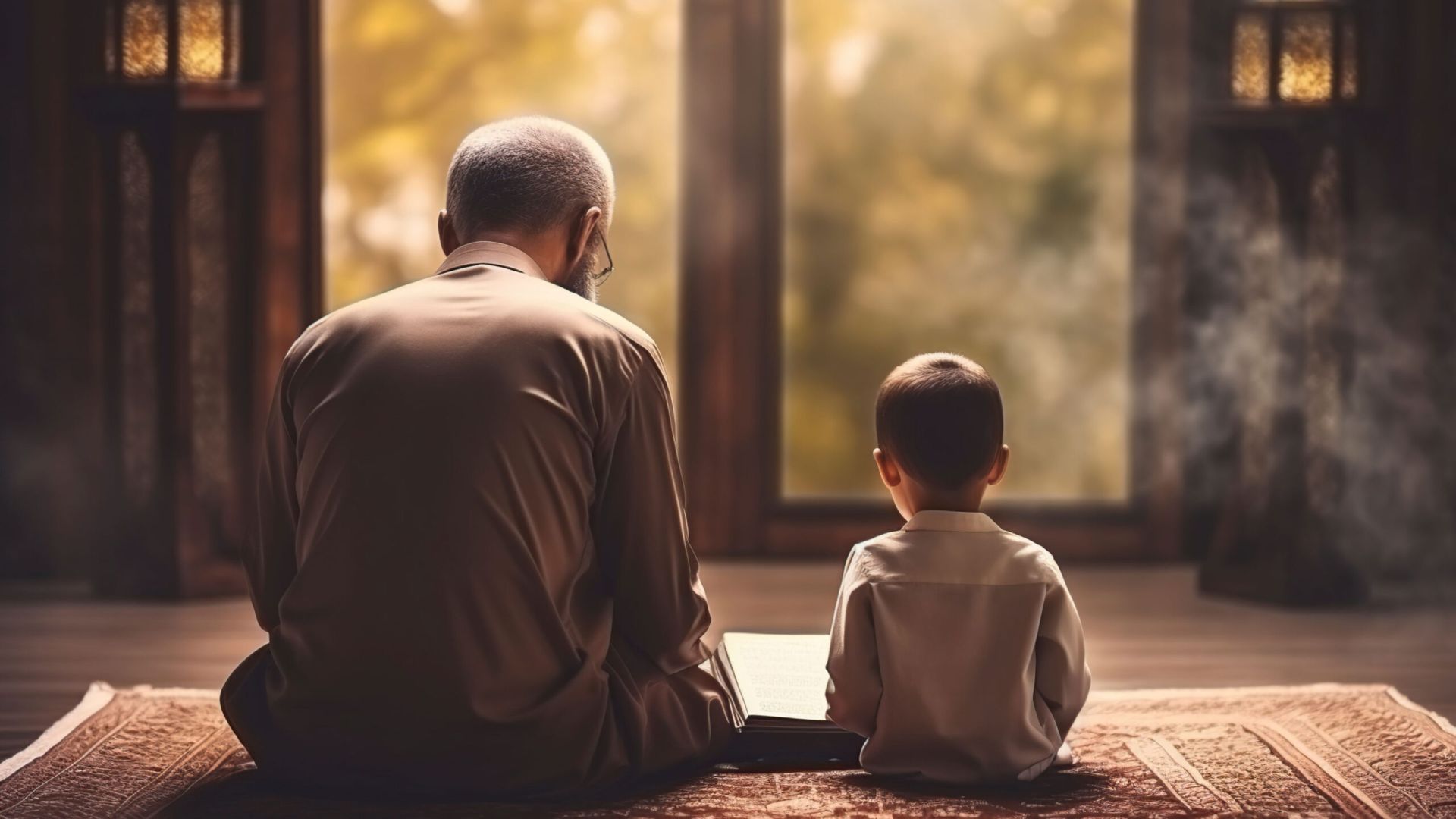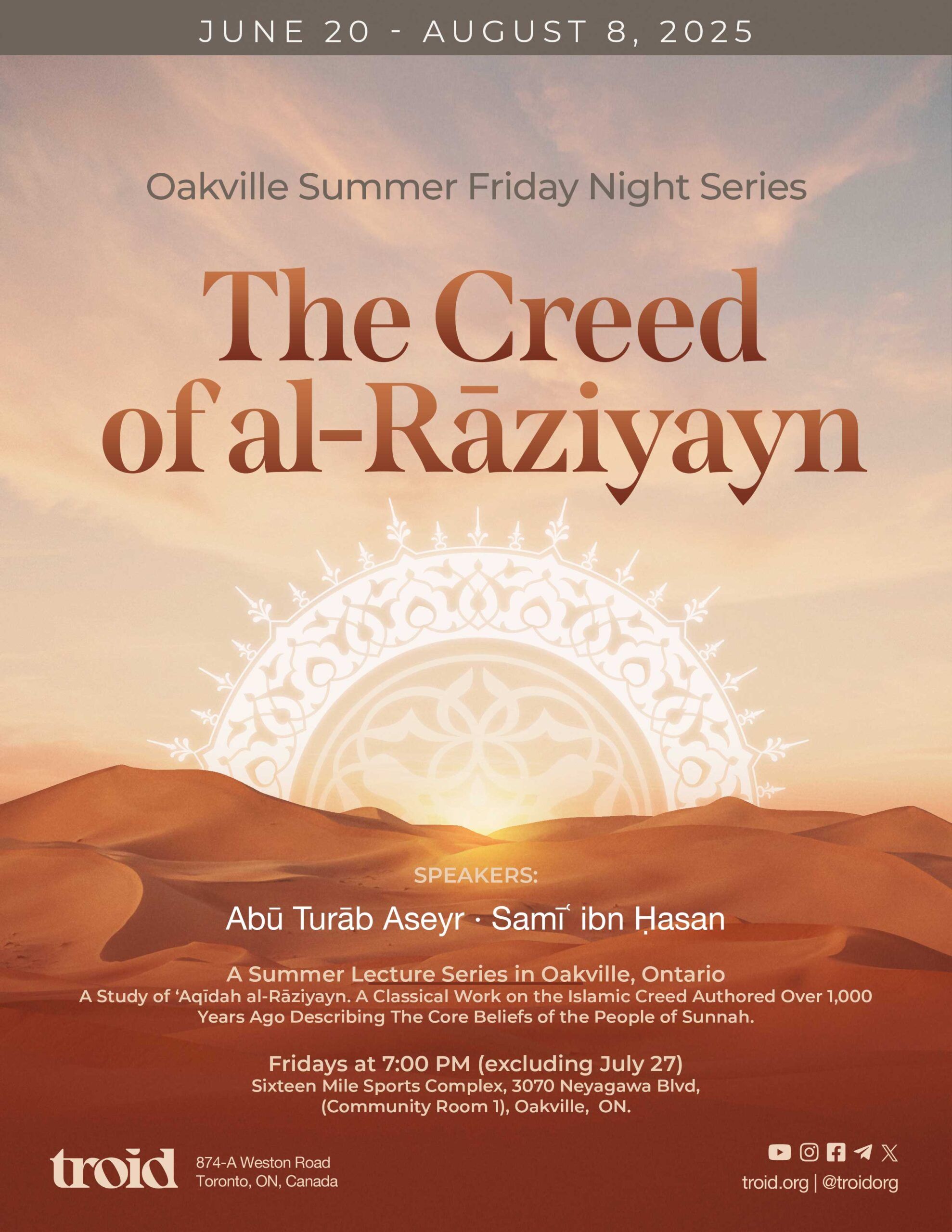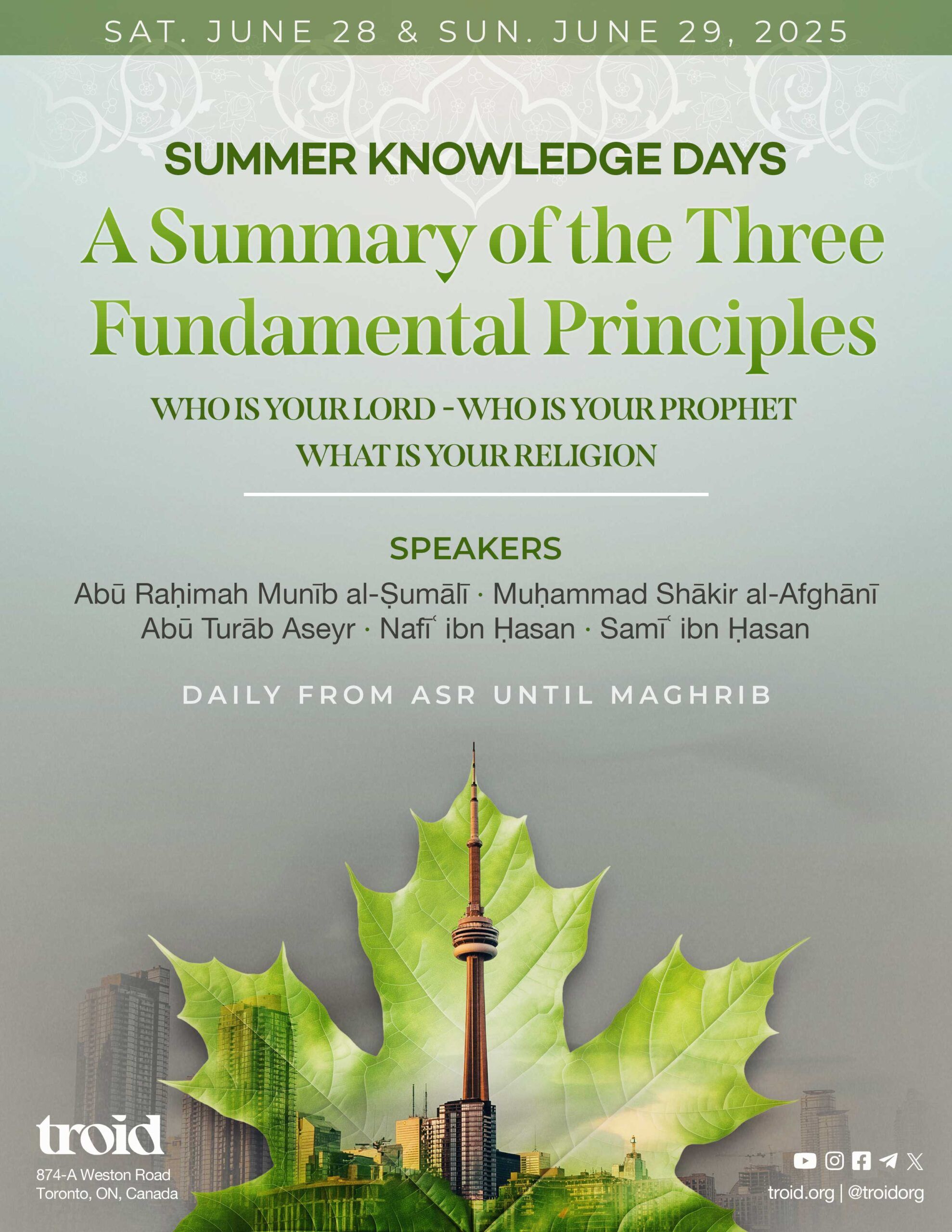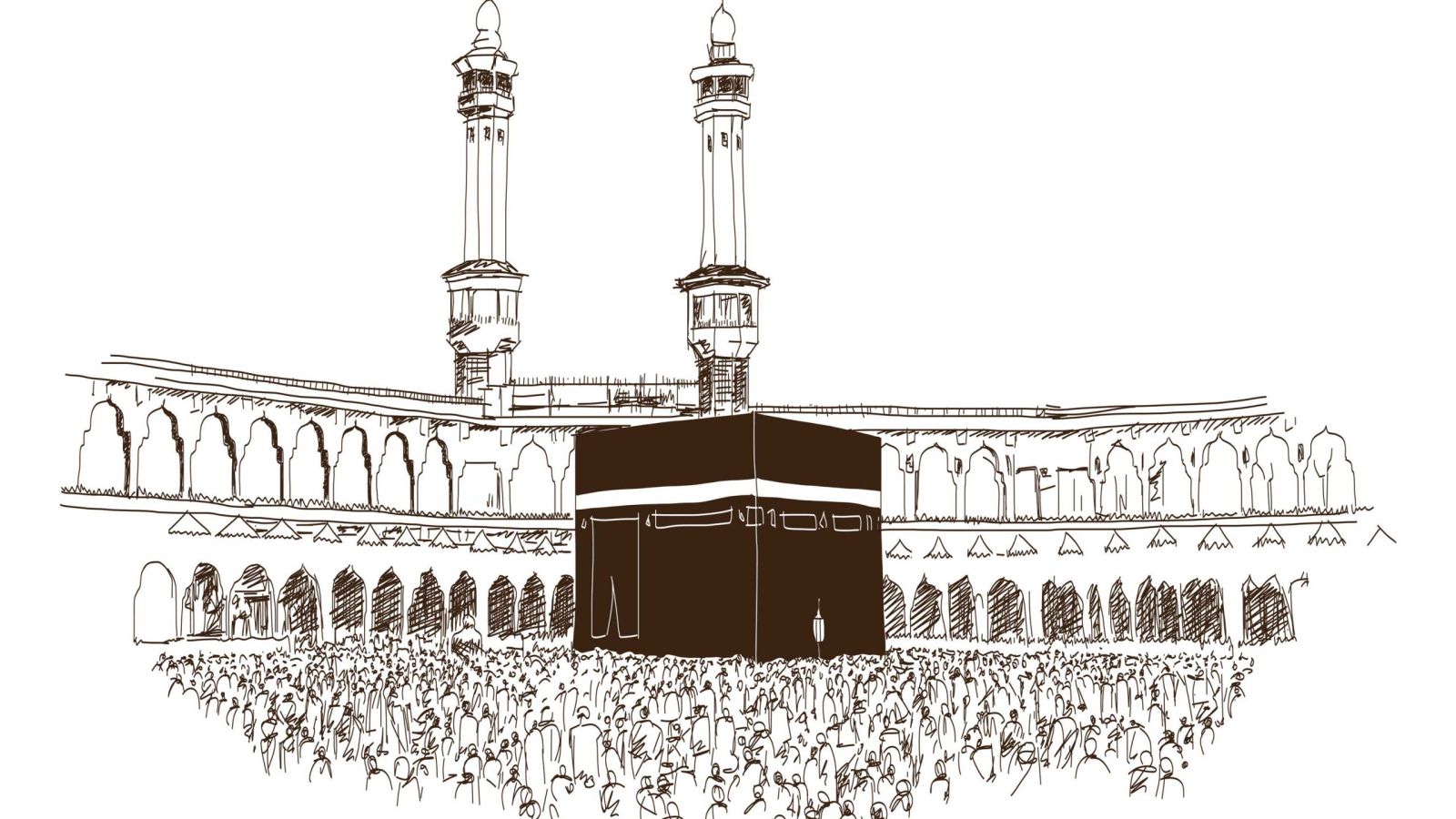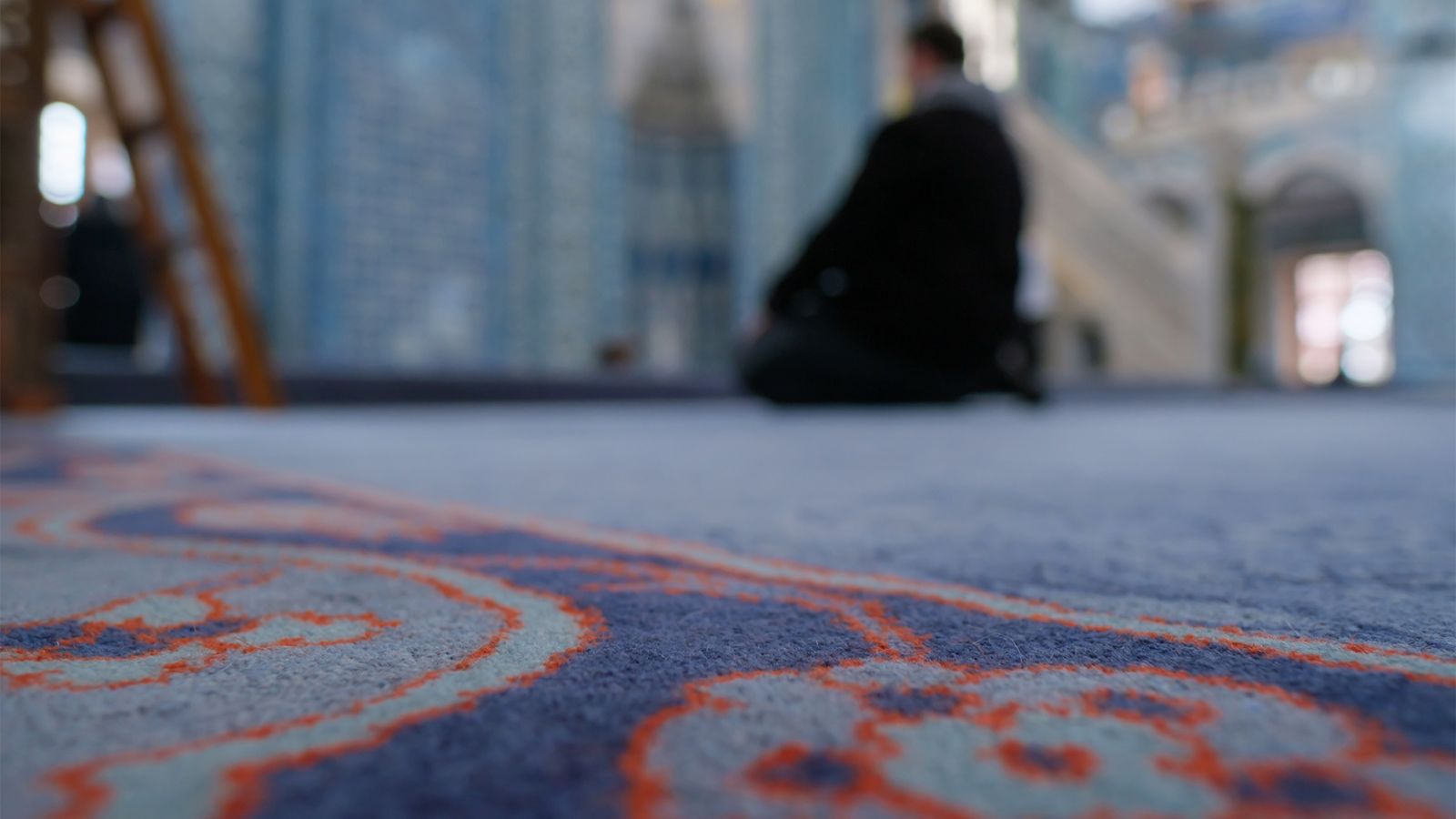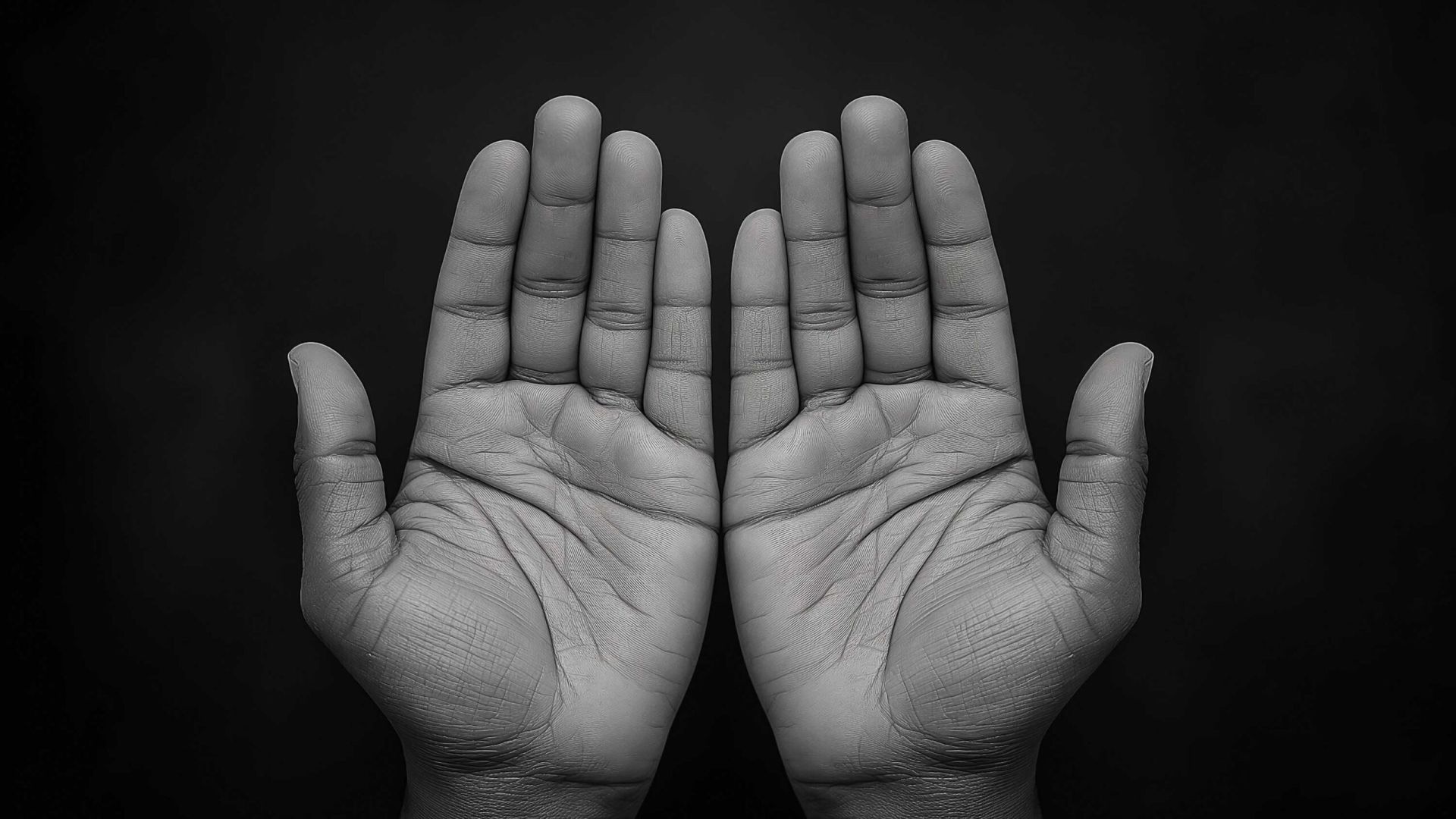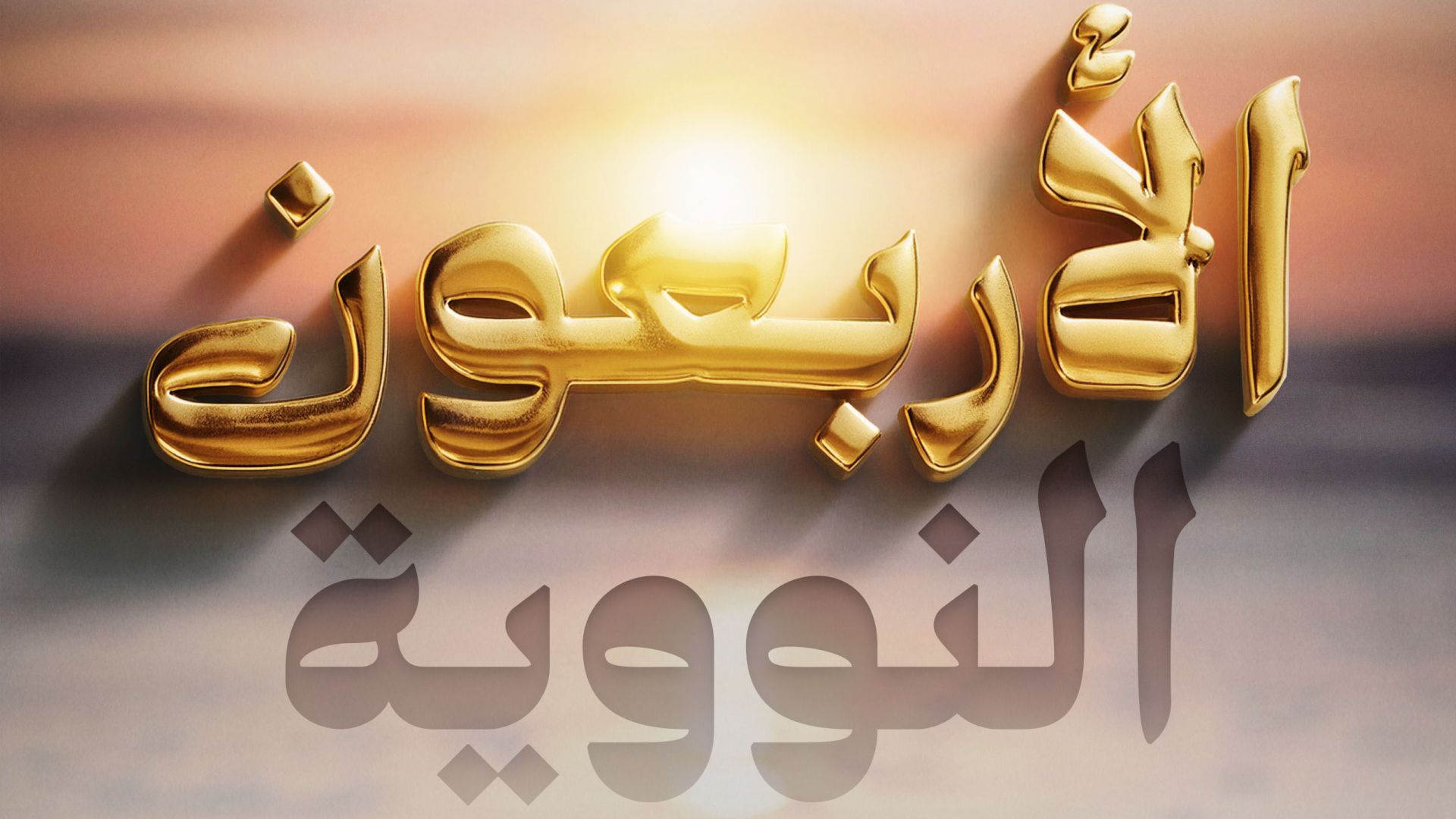On the Raising of Hands during Prayer
Al-ʿAllāmah Muḥammad ibn ʿAbd al-Raḥmān al-Mubārakfūrī
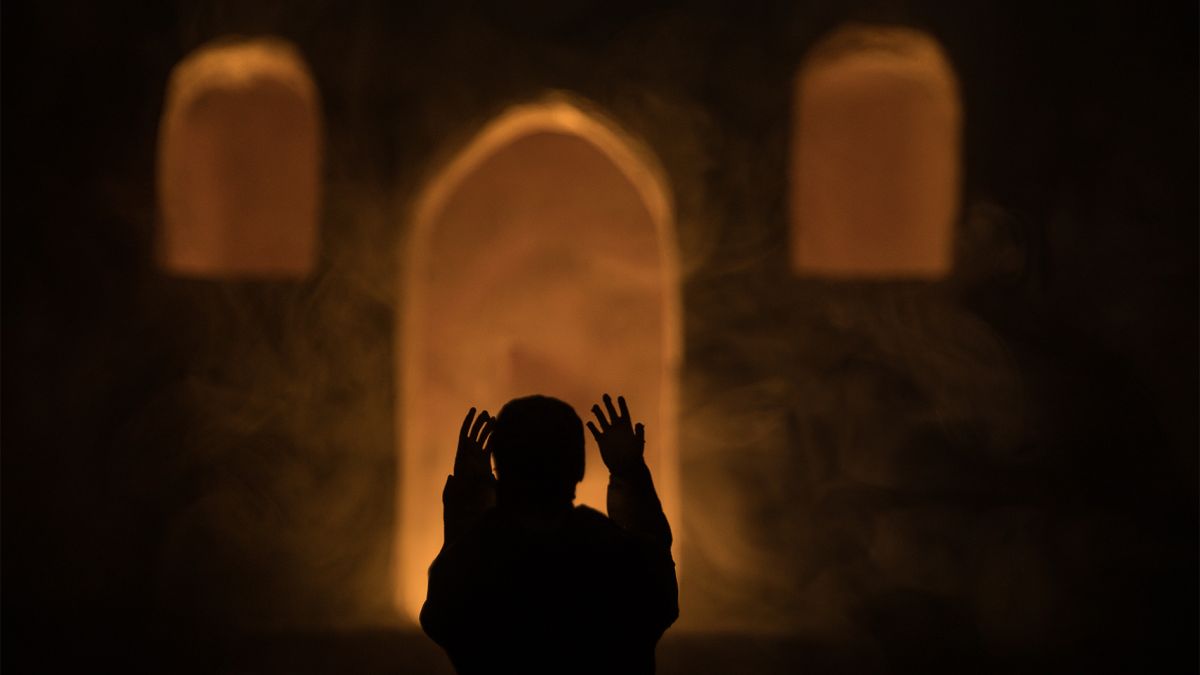

And the answer is that there is no evidence in it for forbidding raising of the hands at specific places in the prayer and at specific times, and that is at the rukuʿ and rising from it.
On Raising the Hands in Prayer (Part 1)
[Start of quote from At-Tirmidhī ‘…’ indicates the omission of isnād]
Chapter 189 – Raising Hands at Ruku’
255: …From Saalim from his father (ibn ʿUmar) who said,
“I saw the Messenger of Allāh ﷺ raise his hands up to his shoulders when he started the prayer, and when he went into ruku` and when he raised his head from ruku’, and the son of ibn ʿUmar added in his ḥadīth, ‘and he did not do that between the two sajdas”1
256: Abū `ʿĪsá (i.e. al-Tirmidhī) said, …az-Zuhree related to us the likes of the ḥadīth of ibn ʿUmar.
He said: and the aḥādīth like this are related from ʿUmar, Ali, Wa`il ibn Hujr, Mālik ibn Huwairith, Anas, Abū Hurayra, Abū Haamid, Abū Aseed, Sahl ibn Saʿd, Muḥammad ibn Muslima, Abū Qatādah, Abū Mūsá al-Ash`aree, Jābir and Umair al-Laithee.
Abū ʿĪsá said, the ḥadīth of ibn ʿUmar is Ḥasan Ṣaḥīḥ. And some of the people of Knowledge from the Companions of the Prophet ﷺ held this view (stated in the ḥadīth), from amongst them: ibn ʿUmar, Jābir ibn ʿAbdullāh, Abū Hurayra, Anas, ibn ʿAbbās, ʿAbdullāh ibn Zubair and others. And from the Taabi`een: Ḥasan al-Bʿasri, `Ataa, Tawoos, Mujāhid, Naafi`, Saalim ibn ʿAbdullāh, Saʿīd ibn Jubair and others.
And of this opinion were ʿAbdullāh ibn Mubārak, ash-Shaafi`ee, Aḥmad and Ishāq.
ʿAbdullāh ibn Mubārak said, “the ḥadīth of the one who raises his hands is established,” and he mentioned the ḥadīth of Saalim from his father (i.e. no.255), “and the ḥadīth of ibn Mas`ud is not established, ‘that the Prophet ﷺ did not raise his hands except the first time’”…
…From `Alqama who said, ‘ibn Mas`ud said, “shall I not pray with you the prayer of the Messenger of Allāh ﷺ” so he prayed and he did not raise his hands except the first time.’
At-Tirmidhī said: and the ḥadīth like this are related from al-Baraa ibn Aazib.
Abū ʿĪsá (al-Tirmidhī) said: the Ḥadīth of ibn Masʿūd is a ḥasan ḥadīth.
And of this opinion (that one raises his hands only once) were more than one of the People of Knowledge from the Companions of the Prophet ﷺ and the Taabi`een. And it is the opinion of Sufyān and the People of Kufah.
[END OF QUOTE FROM JAAMI AT-TIRMIDHEE]
•His saying, ” raise his hands up to his shoulders when he started the prayer, and when he went into ruku’ and when he raised his head from ruku`”
This is clear evidence that the raising of the hands in these places is a Sunnah. And this is the truth and that which is correct.
Bukhārī quotes in his ‘Ṣaḥīḥ’, after this ḥadīth of ibn ʿUmar, from his shaikh Ali ibn al-Madanee who said, ‘it is a duty upon the Muslims that they raise their hands at the time of ruku` and rising from it, due to this ḥadīth of ibn ʿUmar.’2 And this is in the narration (of the Ṣaḥīḥ) by ibn ʿAsākir. And Imām Bukhārī mentioned this in his ‘Juz Raf` al-Yadain’3 and expounded on it, and he was the most knowledgeable person of his time.
•”And he did not do that between the two sajdas”
And in a narration of Bukhārī, “and he did not do that when he made sajda, nor when he raised his head from sajda.”
•”And the aḥādīth like this are related from…”
[Sources of narrations omitted]
as-Suyuti4 said in ‘al-Azhaar al-Mutanaathira fī al-Akhbaar al-Mutawaatira’, “the aḥādīth of raising (hands at ruku) are mutawātir from the Prophet ﷺ”.
And al-Ḥāfiẓ (ibn Hajr)5 said in ‘al-Fath’, “Bukhārī mentioned that raising of the hands at ruku` and at rising from ruku` is related from seventeen of the Ṣaḥābah. Al-Ḥākim and Abū al-Qāsim ibn Mandah mention that from amongst the ones who narrate it are the ten promised Paradise. And our shaikh Abū al-Fadl al-Ḥāfiẓ (i.e. al-ʿIrāqī) mentioned that he investigated the narrations from the Ṣaḥābah and they reached fifty (Ṣaḥābah).”6
Ash-Shawkaanee said in ‘an-Nail’7, “that al-Bayḥaqī list in his ‘Sunan’ and ‘Khilāfiyaah’ the names of those that the relate the raising of hands (at ruku` reaching) the likes of thirty Ṣaḥābah. And he said, ‘I heard al-Ḥākim say, “the ten promised Paradise related this Sunnah and others from the greatest of the Ṣaḥābah.” and it is as he said. And al-Ḥākim and al-Bayḥaqī also said, ‘And a narration of a Sunnah is not known upon which the ten and those after them from the greatest of the Companions agreed to, due to their being scattered across the lands, except this one’” 8
•His saying, “and some of the people of knowledge from the companions of the Prophet ﷺ held this view…”
al-Ḥāfiẓ (ibn Hajr) said in ‘al-Fath’, “Muḥammad ibn Naṣr al-Marwazī said, ‘the scholars of the lands agree to the legislation of this (sunnah) except the people of Kufah.’ And al-Bukhārī authored a separate book on this issue, and he relates in it from al-Ḥasan and Humaid ibn Hʿalál, ‘that the Ṣaḥābah used to do that.’ And Bukhārī said, ‘and al-Ḥasan did not exclude anyone’” 9
I say: al-Bukhārī said in ‘Juz Raf` al-Yadain’ 10, “al-Ḥasan and Humaid ibn Hʿalál said, ‘the Companions of the Messenger of Allāh ﷺ used to raise their hands’ and they did not exclude any one of the Companions of the Prophet ﷺ. And it is not established with the People of Knowledge from any of the Companions that he ﷺ did not raise his hands. And what we have described is also reported from a number of the Companions of the Prophet ﷺ, and likewise from a number of scholars of Mecca, Hijaaz, ʿIrāq, Shaam, Bʿasra, Yemen, and a number from Khurasān.
From amongst them: Saʿīd ibn Jubair, `Atā ibn Abī Rabaah, Mujāhid, al-Qāsim ibn Muḥammad, Saalim ibn ʿAbdullāh ibn ʿUmar ibn al-Khaṭṭāb, ʿUmar ibn ʿAbd al Aziz, Nu`maan ibn Abī Ayaash, al-Ḥasan, ibn Sīrīn, Tawoos, Makhool, ʿAbdullāh ibn Dīnār, Naafi` the servant of ʿUmar, al-Ḥasan ibn Muslim, Qays ibn Saʿd and many more.
And it is related from Umm al-Dardā11 that she used to raise her hands.
And ʿAbdullāh ibn Mubārak used to raise his hands (at ruku`) and likewise the generality of his companions. From amongst them, ʿAlī ibn al-Husayn, Abd ibn ʿUmar, Yahya ibn Yahya, the Muhadditheen of the People of Bukhār from amongst them: ʿĪsá ibn Mūsá, and Ka`b ibn Saʿīd, Muḥammad ibn Silām, ʿAbdullāh ibn Muḥammad, al-Musnadee, and many more beyond enumeration.
There is no difference upon what we have described amongst the people of Knowledge. And ʿAbdullāh ibn Zubair, Ali ibn ʿAbdullāh, Yahya ibn Ma`een, Aḥmad ibn Ḥanbal, Ishāq ibn Ibrāhīm affirmed this ḥadīth and considered them to be the truth. And these are the People of Knowledge from the people of their times.”12
•His saying, “and of this opinion were ʿAbdullāh ibn al-Mubārak, and al-Shāfiʿī and Aḥmad and Ishāq”
And it is the opinion of Mālik. And it is the last of two sayings from him and the most authentic.
al-Ḥāfiẓ said in ‘al-Fath’, “ibn ʿAbd al Barr13 said, ‘nobody relates the leaving of raising the hands from Mālik except ibn al-Qāsim. And that which we take to is the raising of the hands as in the ḥadīth of ibn ʿUmar. This is what Wahb and others narrate from Mālik and al-Tirmidhī does not relate from Mālik an opinion other than (the one reported by ibn al-Qāsim).’ Al-Khaṭṭābī14 quoted, and al-Qurtobee followed him in ‘al-Mufham’, that the last of the two sayings and the most authentic from him was this.
And I have not seen the Mālikiyyah15 use evidence for the leaving of raising hands except the saying of ibn al-Qāsim”16
az-Zayla`i 17 said in ‘Nasb ar-Rāyah,’ quoting from ‘Juz Raf` al-Yadain’ of al-Bukhārī, “ibn al-Mubārak used to raise his hands and he is the most knowledgeable of the people of his time as far as is known. And ibn al-Mubārak said, ‘I prayed beside Nu`maan and I raised my hands. So he said to me, “I fear that you became confused,” so I said to him “if I did not become confused at the first (raising) then I was not confused at the second.”’ al-Wakee said, ‘may Allāh have mercy upon ibn al-Mubārak, he used to have his answers ready.’”
•His saying, “and he prayed and he did not raise his hands except the first time”
Those who say that the raising of hands at the ruku` and at the rising from the ruku` is abrogated seek evidence from this ḥadīth. But this ḥadīth is da`īf as you will come to know and their is no authentic ḥadīth on this subject.
Footnotes:
[1] And in the narration of Bayhaqee (2/26) there occurs the addition, “and this prayer of his was not abandoned till he met Allāh”
[2] Imām ash-Shaafi`ee said, “it is not permissible for anyone who hears the ḥadīth of the Messenger of Allāh ﷺ to do with raising the hands at the commencement of prayer and at going into and rising from ruku`, that he leaves emulating his actions ﷺ”
[‘al-Qawl al-Mubeen’ of Shaykh Mashur Salmān, pg.103, who refers it to ‘Tabaqaat ash-Shaafi`iyyah al-Kubra’ of as-Subki (2/100), under the biography of Abū Isma`īl ibn Yahya al-Muzanī, the student of ash-Shāfi`ī.]
[3] His book on ‘Raising Hands in Prayer’
[4] He is the Imām, Ḥāfiẓ and Mujtahid Jalāl ad-Dīn Abd al-Raḥmān al-Ṣuyutī. He busied himself in the pursuit of knowledge from an early age and studied under a lot of scholars, and he wrote a great number of works (about 600) on practically every Islamic science. He died in the year 911H.
[5] He is the great Imām, Ḥāfiẓ, and Mujtahid scholar of the 8th century. He studied under many of the great pillars of ḥadīth and fiqh of his time and wrote a number of beneficial works, mainly revolving around ḥadīth and it’s related sciences. His most famous work is his commentary to Ṣaḥīḥ al-Bukhārī entitled ‘Fath al-Bārī’ whose excellence is undisputed. He died in the year 852H.
[6] I say: this saying occurs in ‘Fat‘h al Baree’ (2/280) under the chapter heading, “raising of hands at the takbīr, and at ruku` and at rising from it.”
[7] I say: this saying occurs in ‘Nail al-Awtaar’ [2/199]. Imām ʿAlī ibn Muḥammad ibn ʿAbdullāh al-Shawkānī was the great Mujtahid scholar of the 12th century. He was born in the year 1173H and died in the year 1250H. He studied under a galaxy of prominent scholars of Ahlus Sunnah and wrote many books covering all Islamic sciences. See his biography as given in the preface to his tafsīr (pp.4-9).
[8] ibn al-Qayyim states in ‘Zaad al-Ma`aad’ (1/218), “And raising the hands in these three places is related by the likes of 30 people, and the ten (promised Paradise) agreed upon relating it. And there is nothing at all contraḍīcting this that is established. Rather this was his ﷺ guidance till he left this world.”
[9] ‘Fath’ (2/279)
[10] (pg. 8), with the tahqeeq of Shaykh Muqbil ibn Hādī.
[11] She is..
[12] Al-Khaṭṭābee (d.388) said in ‘Mu`ālim as-Sunan’ [his commentary to Abū Dāwūd], (1/160, chpt. “and from the chapter, ‘raising hands at the commencement of prayer’”),
“I say there is a difference of opinion over these aḥādīth from two perspectives…
The second: the difference over raising the hands at ruku` and after rising from it, and at standing after the first tashahhud. So the majority of scholars took to the saying that the hands are raised at the ruku` and at rising from it. And it is the saying of Abū Bakr, ʿAlī, ibn ʿUmar, Saʿīd al-Khudrī, ibn ʿAbbās, Anas, and ibn Zubair…
…I say: the authentic aḥādīth which have come affirming the raising of hands at the ruku` and at rising from it take precedence over the ḥadīth of ibn Mas`ud. And affirmation takes precedence over negation.”
[13] He is the great Māliki scholar and ḥāfiẓ, author of voluminous works on ḥadīth, ḥadīth narrators, and ḥadīth commentary. He became known by the title ‘The Bukhārī of the West’ and died in the year 463H. Al-Dhahabī says about him, “it is rare that the eyes should see the like of him.”
[14] ‘Mu`ālim as-Sunan’ (1/167)
[15] ibn al-ʿArabī al-Mālikī said in ‘Aḥkām al-Qurʾān’, (4/1900), while talking about raising hands at ruku`, “this was what the Prophet ﷺ used to do. And it is the madhab of Mālik according to what is related from him by the people of Madīnah.”
[16] ‘Fath’ (2/279-280).
Now compare this to what the author of ‘Albani Unveiled’ states while attacking the Shaykh for quoting ibn ʿAsākir that Imām Mālik raised his hands right up to his death (pg.36), “You have quoted a portion of the truth correctly, but also blundered in one of your opinions…but it is a mistake to say that the great Imām of Madīnah, Malik ibn Anas (raḥimahullāh) “practised it right up to his death”….”
I ask you, who is it that is blundering in his opinions? Who is quoting half-truths? Albānī or this ignorant writer who quotes from one of the students of Imām Mālik, ibn al-Qāsim (on pg.44) as representing the authoritative view of the Māliki madhab that he did not raise his hands and yet fails to mention that all the other students of Imām Mālik relate that he did raise his hands? An obvious attempt to bolster his highly partisan attitude to his madhab.
I ask you, how is it that a nobody can have his word taken over the words of the great scholars of the past and present? It is to Allāh that we complain of the ignorance of our days!
[17] He is the Hanafi scholar of ḥadīth and one of the teachers of ibn Hajr al-Asqʿalánee. Az-Zayla`i’s discussion concerning raising the hands commences in Vol. 1 pg. 468+ of ‘Nasb ar-Rāyah’
On Raising the Hands in Prayer (Part 2)
Discussion of the ḥadīth of ibn Aazib and ibn Mas`ud
•His saying, “and the likes of this are related from Baraa` ibn Aazib”
He said, “I saw the Messenger of Allāh ﷺ when he started the prayer raise his hands to near his ears, then he did not repeat that.”
Related by Abū Dāwūd and al-Dāraqutnī and it is from the narration of Yazīd ibn Abū Zayn from Abdur Raḥmān ibn Abū Layla from him (i.e. Baraa`). The Ḥadīth Masters (Huffaadh) have agreed that his saying, “then he did not repeat that” is mudraj {18} in the narration from the saying of Yazīd ibn Abū Ziyād. The ḥadīth is related from Baraa` without the addition by Shu`ba and al-Thawrī and Khālid at-Tahhaan and Zaheer and other Ḥadīth Masters.
al-Humaidee said, “this narration was narrated by Yazīd, and Yazīd added to it”
And Uthmān al-Dārimī said, reporting from Imām Aḥmad, “it is not authentic”, and likewise al-Bukhārī, Aḥmad, Yahya al-Dārimī and al-Humaidee declared it da`īf.
Yahya ibn Muḥammad Yahya said, “I heard Aḥmad ibn Ḥanbal saying, ‘this ḥadīth is flimsy, Yazīd used to narrate this for a period of time without saying, “and he did not repeat that”, and when he had suggestions whispered to him, he mentioned it.”
Likewise, al-Ḥāfiẓ said this in ‘at-Talkhees’ (pg.83), and he mentioned that al-Dāraqutnī reported this ḥadīth via the route of ʿAlī ibn Aasim from Muḥammad ibn ʿAbd al-Raḥmān ibn Abū Layla from Yazīd ibn Abū Ziyād. Ibn Abī Aasim said, “I went to Kufah and I met Yazīd ibn Abū Ziyād and he narrated to me this ḥadīth but he did not mention “then he did not do that”, so I said to him, ‘verily ibn Abū Layla narrates this ḥadīth to me from you and in it is “then he did not repeat that”’, and he said, ‘I have not preserved this’”
•His saying, “the ḥadīth of ibn Mas`ud is a ḥasan ḥadīth”19
Aḥmad and Abū Dāwūd relate it. At-Tirmidhī declared it ḥasan and ibn Hazm declared it ṣaḥīḥ.
Ibn al-Mubārak declared it da`īf and said, “the ḥadīth of ibn Mas`ud is not established.” as mentioned by al-Tirmidhī.
Abū Dāwūd said in his ‘Sunan’ (pg.272) after relating this ḥadīth, “this ḥadīth is a summary of a long ḥadīth, it is not ṣaḥīḥ with this wording.”
Imām Bukhārī said in ‘Juz Raf` al-Yadain’ after mentioning the ḥadīth, “Imām Aḥmad said, narrating from Yahya ibn Ādam who said, ‘I saw the ḥadīth of ʿAbdullāh ibn Idrees from Aasim ibn Kulaib, and there was not in it, “then he did not repeat that”’, and this is more authentic as the book is more preserved according to the People Knowledge, because a man narrates something, then he consults the book and it is as it is in the book. al-Ḥasan ibn Rabīʿ` narrated to us from Idrees ibn Aasim from Abd al-Raḥmān ibn al-Aswad from `Alqama that ʿAbdullāh (i.e. ibn Mas`ud) said, “the Messenger of Allāh ﷺ taught us the prayer” so he stood and performed the takbīr and raised his hands, then he performed the ruku` and put his hands together between his knees. And this reached Saʿd who said, ‘my brother has spoken truthfully. But we used to do that in the beginning of Islām, then we were commanded with this (i.e. placing the hands on the knees in ruku`)’ Imām Bukhārī said: and this is what is preserved according to the People of Research into the ḥadīth of ibn Mas`ud”
Al-Ḥāfiẓ ibn ʿAbd al Barr said in ‘al-Tamhīd’, “as for the ḥadīth of ibn Mas`ud, ‘shall I not pray with you the prayer of the Messenger ﷺ’ so he prayed and did not raise his hands except once then indeed Abū Dāwūd said, ‘this is a summary of a long ḥadīth and it is not ṣaḥīḥ with this meaning’. Al-Bazzār said ‘that it is not established, and the likes of this is not depended upon.’ As for the ḥadīth of ibn ʿUmar mentioned in this chapter, then the ḥadīth was said in Madīnah and is ṣaḥīḥ, having no narrators accused of anything. And the likes of this ḥadīth has been narrated from more than twelve Ṣaḥābah.”
al-Ḥāfiẓ az-Zayla`i said in ‘Nasb ar-Rāyah’, “ibn Abī Ḥātim said in ‘Kitābul Ilal’, ‘I asked my father about the ḥadīth related from Sufyān al-Thawrī from Aasim ibn Kulaib from Abd al-Raḥmān ibn al-Aswad from Alqama from ʿAbdullāh “that the Prophet ﷺ stood and made takbīr and raised his hands and then did not repeat that”, and my father said, “this is a mistake, and it is said the mistake is from al-Thawrī, for a group of people have narrated from Aasim and all of them have said, “that the Prophet ﷺ stood in prayer, and he raised his hands, then he performed the ruku` and placed his hands together between his knees.” And not one of them narrate what al-Thawrī relates.”’”
al-Ḥāfiẓ ibn Hajr said in ‘at-Talkhees’, “this ḥadīth is declared ḥasan by al-Tirmidhī and ṣaḥīḥ by ibn Hazm. Ibn al-Mubārak said, ‘it is not established with me.’ Ibn Abī Ḥātim said from his father that ‘this ḥadīth is a mistake’. Aḥmad ibn Ḥanbal and his shaykh Yahya ibn Ādam said, ‘it is da`eef’, and al-Bukhārī quoted this from them and followed them in their verdict. Abū Dāwūd said that ‘it is not authentic.’ al-Dāraqutnī said, ‘it is not established’. Ibn Hibbān said in ‘al-al-Ṣalāh’, ‘this is the best narration that the people of Kufah narrate with regards to negating raising the hands in prayer at the ruku` and at rising from it, and it is in reality the weakest thing to depend on, because it has defects that invalidate it’”
So with all of this it is established that the ḥadīth of ibn Mas`ud is not ṣaḥīḥ or ḥasan, rather it is da`īf and the likes of it is not used as proof. As for the declaring of it to be ḥasan by al-Tirmidhī then that is not to be depended upon due to his being lenient in his verdicts (of authenticity). As for ibn Hazm declaring it ṣaḥīḥ, then what is obvious is that his authentication is from the point of view of sanad (chain of narration), and it is known that the authenticity of the sanad does not necessitate the authenticity of the matn (text). This despite the fact the declaring ṣaḥīḥ of ibn Hazm is not to be depended upon in the light of it being declared da`īf by these precise Ḥadīth Masters. So depending upon this weak ḥadīth for leaving the raising of hands and it’s abrogation except when starting (the prayer) is not correct.
And if we concede and accept that the ḥadīth of ibn Mas`ud is ṣaḥīḥ or ḥasan, then what is obvious is that ibn Mas`ud forgot about it, as he forgot about many matters.
Al-Ḥāfiẓ az-Zayla`i said in ‘Nasb ar-Rāyah’, quoting from the author of ‘at-Tanqeeh’ that, “there is nothing strange in the forgetting of ibn Mas`ud, for ibn Mas`ud forgot from the Qurʾān that which the Muslims afterwards did not disagree upon – the mu`awwadhatain (i.e. including them as part of the Qurʾān). He forgot about that which the scholars have agreed as regards to it’s abrogation, like placing hands together (between the knees in ruku`), and how two people stand behind the Imām. He forgot about that which the scholars do not differ about that the Prophet ﷺ prayed subh at it’s time on the Day of al-Nahr, and he forgot how the Prophet ﷺ combined (prayers) on Arafah. He forgot about that which the scholars do not differ about with regards to placing the elbow and the forearm on the floor, and he forgot how the Prophet ﷺ used to recite, ‘wa maa khalaqadh dhakara wal unthaa’. 20 So if it is possible that ibn Mas`ud forgets the likes of these in prayer, then how is it not possible that he forgets the raising of the hands?’”21
And if we accept that ibn Mas`ud did not forget this, then the aḥādīth of raising the hands in three places takes precedence over the ḥadīth of ibn Mas`ud, because it has been narrated by such a large number of Companions (RAA) to the extent that as-Suyuti said, ‘the ḥadīth of raising hands (at ruku`) are mutawātir from the Prophet ﷺ’ as you have come to know in what has preceded.
al-Aini said in ‘Sharḥul Bukhārī’, “the conclusion of this topic of choosing the stronger opinion (is) that it is upon the number of narrations and the fame of the narrators Even if one of two narrations is narrated from one route, and the other by two routes, then the one narrated by two takes precedence in acting upon.”
And al-Ḥāfiẓ al-Hāzinī said in ‘Kitābul I`tibaar’, “and from what makes one ḥadīth weightier than another, is the number of narrations of one of them.”
Furthermore, the ḥadīth of ibn Mas`ud does not lend evidence to the abrogation of raising hands except at the beginning (of the prayer). Rather it lends evidence to it not being obligatory. Ibn Hazm said in his discussion of the ḥadīth of Baraa ibn Aazib mentioned previously, “if it is authentic, it is evidence that he ﷺ did that (i.e. leave the raising of the hands at ruku`) to explain it’s permissibility, so there is no contraḍīction between it and the ḥadīth of ibn ʿUmar and others.”
I say: and all of this is according to the limits of concession, and if not then the ḥadīth of ibn Mas`ud is da`īf and is not to be used as proof as you have come to know.22
•His saying, “and of this opinion were more than one of the people of knowledge from the companions of the Prophet ﷺ”
That is what is narrated from ʿUmar and ʿAlī and ibn ʿUmar, and the discussion on these narrations will follow. 23
Footnotes:
[18] I.e. an addition to the ḥadīth interpolated by one of it’s narrators, in this case Yazīd, and therefore not from the words or actions of the Prophet ﷺ.
[19] At this point I would like to point out the deception of the author of ‘al-Albānī Unveiled’ where he criticises the words of the Shaykh, “whereas not raising hands is not authentically related from him except once via ibn Mas`ud,” by trying to contraḍīct this statement by quoting two chains of narration from ibn Mas`ud and then saying (pg.42), “So my dear reader, I have just proven to you that the ḥadīth of ibn Mas`ud has come authentically, through at least two routes, as given above. Can you now believe Albani’s assertion that it comes through only one authentic narration?”
Consider this! Albani states that the ḥadīth comes from the Prophet ﷺ authentically only via ibn Mas’ud. And this author, who seems to put himself in the category of Muhaddith, quotes two routes from ibn Mas’ud to contraḍīct the statement. The difference is like night and day!
[20] Qurʾān (92:3)
[21] The editors to ‘Zaad al-Ma`aad’ of ibn al-Qayyim, Shu`ayb and ʿAbd al Qaadir al-Arna`oot in there endnotes (1/219) endorse these words of az-Zayla`i and refer them to ‘Nasb ar-Rāyah’ (1/394, 397)
[22] For the balanced reader the above section is sufficient to show the ignorance of the author of ‘al-Albānī Unveiled’ when he asks the question, (pg.41), “why should it not be possible to put into practise the Ḥadīth related by the great Companion Ibn Mas`ud (Allāh be pleased with him)? Did he (Allāh forbid) lie or fabricate from the Prophet (Peace be upon him)?” – Thereby betraying his ignorance of the principles of fiqh and the full story surrounding the ḥadīth, thus falling (as he often does in this book) into the very same thing he (unjustly) accuses al-Albānī of – presenting a portion of the truth!
[23] {al-Shawkānī said in ‘Nail al-Awtaar’ (2/202), “….and they seek support also with what is related from ibn ʿAbbās that he said, ‘the Messenger of Allāh ˇ used to raise his hands whenever he made ruku` and whenever he rose from it. Then it came about that he raised them at the commencement of prayer only and left the rest.’ Ibn al-Jawzi related it and said, ‘it has no basis, and I do not know who narrates it and what is authentic from ibn ʿAbbās contraḍīcts this.’
And the likes of this narration is related to ibn Zubair. Ibn al-Jawzi said, ‘it has no basis and I do not know who narrates it and what is authentic from ibn Zubair contraḍīcts this.’”
On Raising the Hands in Prayer (Part 3)
The Evidence for not Raising Hands
•His saying, “and it is the saying of Sufyān and the saying of the people of Kufah”
And it is the saying of Abū Ḥanīfah. The Hanafiyyah say, “verily it (the ḥadīth of ibn ʿUmar) is abrogated by the ḥadīth of ibn Mas`ud and al-Baraa” and we have come to know that they are weak and cannot be used to establish a proof.
And they seek evidence with the narration of ʿUmar (raḍī Allāhu ʿanhū) related by al-Ṭahāwī and Abū Bakr ibn Abī Shaybah from al-Aswad who said, “I saw ʿUmar ibn al-Khaṭṭāb raise his hands in the first takbīr then he did not repeat that.”
I say: this (narration) with this wording is not preserved (i.e. authentic). Ibn Hajr said in ‘ad-Dirāyah’, “al-Bayhaqi said from al-Ḥākim, ‘it is related by al-Ḥasan ibn Ayaash from ʿAbd al Mālik ibn Abjar from az-Zubair ibn Adee with the wording, “he used to raise his hands with the first takbīr and then he did not repeat that” and ath-Thawri relates from az-Zubair ibn Adee with the wording, “he used to raise his hands with the takbīr” without (the addition) “then he did not repeat that”. Ath-Thawri relates this and it is preserved.’”
Furthermore, this narration also contraḍīcts the narration of Ṭāwūs from ibn ʿUmar “that ʿUmar used to raise his hands (going into) ruku` and when rising from it”.
az-Zayla`i said in ‘Nasb ar-Rāyah’, “and al-Ḥākim objects to this ḥadīth as being shādh (irregular), and that proof cannot be established using it, and that it cannot used to oppose the authentic narration from Ṭāwūs ibn Kaisaan from ibn ʿUmar that ʿUmar used to raise his hands at ruku` and when rising from it.”
I say: and for the narration of Ṭāwūs is a da`īf witness {24}, az-Zaylai said in ‘Nasb ar-Rāyah,’ “al-Bayhaqi narrates from Rishdīn ibn Saʿd from Muḥammad ibn Sahm from Saʿīd ibn al-Mūsáyyib who said, ‘I saw ʿUmar ibn al-Khaṭṭāb raising his hands to the level of his shoulders when he started prayer and when he made ruku’ and when he raised his head from it.’”
Addendum: an-Naimaawee thinks that the addition of his saying, “that ʿUmar” after his saying “from ibn ʿUmar” in ‘Nasb ar-Rāyah’ is negligence (on the part of az-Zayla`i), and is not correct. He said,
“And what is correct is this: from Ṭāwūs ibn Kaisaan from ibn ʿUmar ‘who used to raise his hands’ (i.e. with the words “that ʿUmar” omitted). And al-Ḥāfiẓ said in ‘ad-Dirāyah’ while summarising what is contained in ‘Nasb ar-Rāyah’, ‘and it is contraḍīcted by the narration of Ṭāwūs from ibn ʿUmar that he used to raise his hands at the takbīr in ruku` and rising from it.’ Ibn al-Hammām said in ‘Fat‘h al Qadeer’, ‘Haakim considered that it contraḍīcted the narration of Ṭāwūs ibn Kaisaan from ibn ʿUmar (raḍī Allāhu ʿanhū) that he used to raise his hands etc.’ And so it is established with these sayings that al-Ḥākim objects to it due to the narration of ibn ʿUmar not ʿUmar ibn al-Khaṭṭāb.”
I say: the claim of negligence over the additional saying, “that ʿUmar” is completely rejected. And how could it be so when al-Ḥākim ruled that the narration of ʿUmar via the route of al-Aswad who said, ‘I saw ʿUmar ibn al-Khaṭṭāb raise his hands at the first takbīr then he did not repeat that’ to be shādh due to the relation of Ṭāwūs from ibn ʿUmar that ʿUmar (raḍī Allāhu ʿanhū) used to raise his hands at ruku` and when rising from it. This is clear evidence that the saying in the narration of Ṭāwūs, “that ʿUmar” is authentically established. For the narration is not given the ruling of shādh by the use of another companion. As for the saying of al-Ḥāfiẓ (ibn Hajr) in ‘ad-Dirāyah’, “and it contraḍīcts the narration of Ṭāwūs from ibn ʿUmar that he used to raise his hands etc.” then al-Ḥāfiẓ omitted the words, “that ʿUmar” as a summary. And the personal pronoun in “he used to” refers back to ʿUmar and likewise, ibn al-Hammaam does this in ‘Fat‘h al Qadeer’. And the likes of this omission is well known, when summarising and depending upon a previous narration.
And they also seek evidence with the narration of ʿAlī (raḍī Allāhu ʿanhū) related by al-Ṭahāwī and ibn Abī Shaybah and al-Bayhaqi from Aasim ibn Kulaib from his father that ʿAlī “used to raise his hands at the first takbīr of prayer and then he did not raise them again”. Az-Zayla`i said, “it is a ṣaḥīḥ narration” and al-Ainee said in ‘Umdatul Qaree’, “the sanad is ṣaḥīḥ according to the conditions of Muslim.”
I say: this narration from ʿAlī is not ṣaḥīḥ, even if az-Zayla`i said “it is ṣaḥīḥ” and al-Ainee said, “it is ṣaḥīḥ according to the conditions of Muslim”.
Imām Bukhārī said in ‘Juz Raf` al-Yadain’, “Abdur Raḥmān ibn Mahdī said, ‘I mentioned the ḥadīth of an-Nahshilee from Aasim ibn Kulaib to al-Thawrī and he rejected it’”
I say: and al-Aasim ibn Kulaib is alone in reporting this narration. al-Dhahabī said in ‘al-Meezaan’, “he was from the servants and Awliyaah, but he was a Murjī, Yahya ibn Ma`een declared him trustworthy and (likewise) others. Ibn al-Madinee said, ‘he is not relied upon in what he is alone in reporting’”
And if we were to accept that this narration is authentic, then it is not evidence to support abrogation (of raising hands at ruku`) as al-Ṭahāwī and others think.
The author of ‘at-Ta`leeq al-Mumjad’ (i.e. al-Luknawee) from the Hanafī scholars said, “al-Ṭahāwī mentioned after this narration from ʿAlī: ʿAlī did not see the Prophet ﷺ raise his hands and then leave acting on it, except that abrogation was established with him.’ This claim is problematic, for it is possible that the leaving of ʿAlī, and likewise ibn Mas`ud and other Companions, if it is established from them, is because they did not see it to be a stressed Sunnah, necessitating acting by and therefore the ḥadīth is not confined to abrogation. Indeed it is not safe to abrogate an established command of the Prophet ﷺ purely based on good opinion of a Companion when the possibility exists of reconciling the action of the Messenger ﷺ with the action of Companion.”
And they also seek evidence with the narration of ibn ʿUmar, related by al-Ṭahāwī and Abū Bakr ibn Abī Shaybah and al-Bayḥaqī in ‘al-Ma`rifah’ from Mujāhid who said, “I prayed behind ibn ʿUmar and he did not use to raise his hands except at the first takbīr of the ṣalāh”25
I say: the ḥadīth of ibn ʿUmar is weak from a number of perspectives,
Firstly: in it’s sanad is Abū Bakr ibn Ayaash and his memory failed him at the end of his life.
Secondly: that it is shādh for Mujāhid contraḍīcts all of the companions of ibn ʿUmar and they are trustworthy Ḥadīth Masters.
Thirdly: the Imām of this matter, Yahya ibn Ma`een said, “the ḥadīth of Abū Bakr ibn Husayn (i.e. this one) is a vain fancy of his, and it has no basis.”
Imām Bukhārī said in ‘Juz Raf` al-Yadain’, “and it is reported from Abū Bakr ibn Ayaash from Husayn from Mujāhid that he did not see ibn ʿUmar raise his hands except at the first takbīr. And it is related from the People of Knowledge that it is not preserved from ibn ʿUmar except as negligence. Do you not see that ibn ʿUmar used to throw pebbles at the one who did not raise his hands (at ruku`) in prayer? {26} So how could ibn ʿUmar leave something that he commanded others to do and he saw the Prophet ﷺ doing? Imām Bukhārī said, Yahya ibn Ma`een said, ‘the ḥadīth of Abū Bakr from Husayn is a vain fancy of his having no basis’.”
Imām al-Bayḥaqī said in ‘al-Ma`rifah’, “this ḥadīth of Abū Bakr ibn Ayaash was related to us from Abū ʿAbdullāh al-Ḥāfiẓ, [and he mentioned it with this sanad. Then he narrated] from Bukhārī that he said, ‘Abū Bakr ibn Ayaash got confused at the end of his life,’ and the narration is related from Rabīʿ`, al-Laith, Tawoos, Saalim, Abū Zubair, Muhaarib ibn Dithaar, and others saying, “we saw ibn ʿUmar raise his hands when he made takbīr (for ruku`) and when he raised (his head from ruku`).” And it is related from Abū Bakr from Husayn from Ibrāhīm from ibn Masʿūd of old as a mursal mawqūf narration, “that ibn Mas`ud used to raise his hands when he started prayer, and then he did not raise them afterward.” This is what is preserved from Abū Bakr ibn Ayaash, and the first is a grave error due to it contraḍīcting the trustworthy narrations from ibn ʿUmar. Al-Ḥākim said, ‘Abū Bakr ibn Ayaash used to be from the fixed memorisers, then he got confused when his memory failed him, and then he narrated contraḍīctory things.’ So how is the claim of abrogating the ḥadīth of ibn ʿUmar possible with the likes of this da`eef ḥadīth, or how is it possible that we say that ‘he left raising of the hands at ruku` one time to show it’s permissibility as he was not of the opinion that it was obligatory, for his acting upon it is evidence that it is sunnah, and his leaving it is evidence that it is not obligatory.’” [End, as is found in ‘Nasb ar-Rāyah’]
al-Ḥāfiẓ ibn Hajr said in ‘Fat‘h al Bārī’, “and as for the Hanafiyyah then they rely upon the narration of Mujāhid that he prayed behind ibn ʿUmar and he did not see him raise his hands (before and after ruku`). And they (i.e. scholars of ḥadīth) replied by defaming it’s isnād, for it’s narrator is Abū Bakr ibn Ayaash and his memorisation went bad at the end of his life. And if it is authentic than the action (of raising) is established from Saalim, Naafi and others, and the larger number take precedence over the one, especially when their (narration) is affirmatory and his negatory. Furthermore, reconciliation is possible: that ibn ʿUmar did not consider it obligatory. So he did it sometimes and left it at other times”
Al-Fādil al-Luknawī27 said in his ta`līq upon al-Muwaṭṭa of Muḥammad28, “it is well known in the books of Uṣul of our companions (i.e. Ḥanafīs), ‘that Mujāhid said, “I accompanied ibn ʿUmar for ten years and I did not see him raise his hands except once.”’ They said, ‘and ibn ʿUmar reports the raising of hands (at ruku`) from the Messenger ﷺ and he himself left it. And a Companion who narrates a ḥadīth, then he leaves what is narrated (which is) clear in meaning and it is not possible to explain his leaving of it, then you leave depending upon what is narrated.’ And al-Ṭahāwī relates from the ḥadīth of Abū Bakr ibn Ayaash from Husayn from Mujahid that he said, “I prayed behind ibn ʿUmar and he did not use to raise his hands except at the first takbīr of prayer.” Then he said, ‘so this was ibn ʿUmar who saw the Prophet ﷺ raise his hands, then he left that same raising after the Prophet ﷺ and he did not do that except that abrogation was established with him.’ And here arises some points of discussion:
First: investigating the isnād of what they quote from Mujāhid that he accompanied ibn ʿUmar for ten years and did not see him raise his hands except at the first takbīr.
Second: it’s contraḍīcting the narration of Ṭāwūs and other trustworthy narrators that they saw ibn ʿUmar raise his hands (at ruku`).
Third: In the route of al-Ṭahāwī is Abū Bakr ibn Ayaash and he has been spoken about, and his narration is not comparable to the narrations of other trustworthy narrators. al-Bayḥaqī said in ‘Kitābul Ma`rifah’after relating the ḥadīth of Mujāhid via the route of ibn Ayaash, ‘Bukhārī said, “Abū Bakr ibn Ayaash got confused at the end of his life…..”’[mentioning what we narrated earlier. Then Luknawee said] And if you say, taking the explanation of the meaning of the narration to be, ‘that it is possible that ibn ʿUmar did what Ṭāwūs saw before the proof was established of abrogation, then when the proof of abrogation was established he left it and did what Mujāhid mentioned.’ I say (in reply): evidence (of abrogation) cannot be established upon this for it is possible to contraḍīct the sayer and say, ‘it is possible that ibn ʿUmar used to do what Mujāhid saw before the evidence was established about the necessity of raising the hands. Then when the necessity was established with him he raised (them as narrated by Ṭāwūs).’ On top of this taking the opinion of abrogation is taking something without evidence, so do not listen.
So if a person were to say, ‘the evidence (for abrogation) is the narrator contraḍīcts what he narrates’, we would say, ‘this does not necessitate abrogation as has been discussed.’
Fourth: and this is better, that we accept that the leaving of (raising hands at ruku`) is established from ibn ʿUmar, but it is possible that his leaving be to explain it’s permissibility, or due to the absence of his seeing the raising of hands as being a necessary Sunnah. And this does not belittle the establishment of raising hands from him and from the Messenger of Allāh ﷺ.
Fifthly: that the leaving of a narrator of what he narrates according to the Hanafiyyah is to be left as proof when that which contraḍīcts it is certain, as is clear from their books. And this is not the case here. Due to the possibility that the raising (of hands) which is established from the Messenger ﷺ, was conveyed by ibn ʿUmar with resolve, and he left it sometimes to show it’s permission. So his leaving it is not his contraḍīcting what he narrates upon certainty.”
Addendum: and the writer of ‘al-Urf ash-Shadhee’ said, “and for us is what al-Ṭahāwī narrates with a strong sanad from ibn Abī Ziyād from Aḥmad ibn Yunus from Abū Bakr ibn Ayaash who said, ‘I have not seen a single faqīḥ raise his hands except at the first takbīr’”
I say: maybe this saying of Abū Bakr ibn Ayaash was after his memory failed and his confusion. And how (could it not be so) when the writer of ‘al-Urf ash-Shadhee’ knew that the raising of hands is established as a mutawātir action, which is not possible to reject. And Imām Muḥammad ibn Naṣr said, “the scholars of the lands have agreed to the legislation of this except the people of Kufah” as you have come to know.
And he (the above mentioned author) said, “and for us is another ḥadīth from ibn ʿUmar that ‘he ﷺ did not raise his hands except one time,’ as in ‘Khilāfiyaah’ of al-Bayḥaqī, and az-Zayla`i quoted it in his takhreej and al-Ḥākim said, ‘it is maudu and I have not come across the beginning of it’s isnād.’…. And maybe it’s isnād is strong.”
I say: this ḥadīth of ibn ʿUmar is bāṭil and maudu’.
az-Zayla`i said in ‘Nasb ar-Rāyah’ after quoting this ḥadīth from ‘Khilāfiyaah’ of al-Bayhaqi, “al-Bayhaqi said, ‘al-Ḥākim said, “this ḥadīth is bāṭil and maudu. It is not permissible to mention it except by way of censure.”’”29
al-Ḥāfiẓ said in ‘ad-Dirāyah’, “and al-Bayhaqi narrates also via the route of az-Zuhree from Saalim from his father the likes of it and it is transmitted from al-Ḥākim that it is maudu and it is as he said.”30
So may Allāh guide those Muqallidīn who leave the authentic, agreed upon, ḥadīth of ibn ʿUmar and stick to his ḥadīth which al-Ḥākim ruled to be maudu and especially this muqallid, who without investigating the beginning of the isnād of this ḥadīth, and with his knowledge that al-Ḥākim ruled it to be maudu, hopes that it’s isnād is strong and sticks to it.
He (the author) said, “and we have another ḥadīth, which is mursal from ‘Abbād ibn ʿAbdullāh ibn Zubair, and `Abbād is a tabi`ī, he said, “the Prophet ﷺ did not raise his hands except in the first takbīr”. And al-Ḥāfiẓ came across it’s isnād in ‘ad-Dirāyah’ and he said, ‘so look into it’s isnād.’ And verily I looked into the isnād and it became clear that their occurs negligence from the author of ‘Nasb ar-Rāyah’, for he wrote Muḥammad ibn Yahya and he is not well-known. And the truth is that he is Muḥammad ibn Abū Yahya and he is trustworthy. So the sanad ends up as being ṣaḥīḥ.”
I say: al-Ḥāfiẓ did not say in ‘ad-Dirāyah’: “so look into it’s isnād”, rather he said: “and this is mursal, and also in it’s isnād is someone who should be looked into.”
And al-Ḥāfiẓ spoke about this ḥadīth from two perspectives: Firstly that it is mursal, and the mursal ḥadīth according to the strongest opinion is not proof. Secondly, that in it’s isnād is one who should be looked into, so everyone who claims this isnād to be authentic then it is upon him that he establishes the condition of every man in its sanad to be trustworthy, acceptable to be relied upon and that it is linked.
And as for the claim of negligence on the part of the author (az-Zayla`i) over Muḥammad Abū Yahya, and after that accepting the authenticity of the narration, then it does not necessitate the authenticity of the sanad of the ḥadīth, for in it is one whose state is not known in the books of Rijaal (biographies of narrators).
And they seek evidence also from the ḥadīth of Jābir ibn Samurah who said,”I went out with the Messenger of Allāh ﷺ and he said, ‘what is the matter that I see you raise/move your hands as if they were the tails of headstrong horses. Be calm in your prayer.’” (Muslim)
And the answer is, that there is no evidence in it for forbidding raising of the hands at specific places in the prayer and at specific times, and that is at the ruku` and rising from it. Because it is a summary of a long ḥadīth, and the clarification of that is that Muslim also narrates from Jābir ibn Samurah who said, “when we said prayer with the Messenger of Allāh ﷺ we said the taslīm and gestured with our hands on both sides. Upon this the Messenger ﷺ said, ‘why do I see you moving your hands as if they were tails of headstrong horses? It is enough for you that one should place one hand on one thigh and then pronounce taslīm to the brother on one right and left”, and in a narration, “when one of you says the taslīm then he should only turn his face towards his companion and not gesture with his hands.”
Ibn Hibbān said, “mentioning the (full) narration is necessary to explain the previously mentioned summarised narration because the people were commanded with tranquility in prayer at the point of indicating at the taslīm, not the raising which is established at ruku`.” Then he narrates the likes of what Muslim narrates.
Al-Bukhārī said, “the one who depends upon the ḥadīth of Jābir ibn Samurah for forbidding the raising of hands at ruku`, then there is not for him a portion of knowledge, for this is well-known, having no difference of opinion over it that it was in the state of tashahhud” [as quoted in ‘at-Talkhees’]
az-Zayla`i said in ‘Nasb ar-Rāyah’, after mentioning the ḥadīth of Jābir ibn Samurah summarised, “and Imām Bukhārī objects (to this claim) in his book which he wrote about raising of hands, ‘as for the depending of some people who have no knowledge of the ḥadīth of Tamīm ibn Tarfu from Jābir ibn Samurah [and he mentioned the summarised ḥadīth, then the full version]….and if it were as they believe, then the raising of hands in the Eed prayer would also be forbidden, because the ḥadīth does not specify one raising from another, but it is general.’”
az-Zayla`i then said, “and (it is possible) for someone to say: ‘that the aḥādīth do not explain one another, as there occurs in the wording of one ḥadīth, “be calm in prayer”, and the one who raises his hands at taslīm, it is not said to him, “be calm in prayer”, but it is said to the one who raises his hands at specific places in prayer, and that is in the state of ruku and sujūd and the likes of this. This is what is obvious, and the narrator relates the first ḥadīth at a time as he bears witness to, and narrates the second ḥadīth at another time (in) prayer as he bears witness to. And there is no far-fetchedness in that.”
I say: az-Zayla`i does not reply to the saying of al-Bukhārī, “if it were as they believe, then the raising of hands in the takbīrs of Eed would also be forbidden”, so the reply he gives to this is the reply we give to raising of hands before and after ruku`.
As for his saying, “the one who raises his hands at taslīm is not said to him, ‘be calm in prayer’” then that is rejected, rather the one who raises his hands before completing and turning away from the prayer is in the prayer, even if it is at the time of the first or second taslīm, it is said to him, “be calm in prayer.” Do you not see that ʿAbdullāh ibn Zubair saw a man raising his hands to make duʿāʾ before he left the prayer, so when he completed the prayer he said, “the Messenger of Allāh ﷺ did not raise his hands until he had completed his prayer” related by at-Ṭabarānī and it’s narrators are trustworthy. So think on this. 31
End of commentary wal humdolillāh
Footnotes:
[24] ‘witness’: another ḥadīth which supports the meaning of the ḥadīth in question. But in the specific case above the witness is actually in itself deemed to be da`eef.
[25] Quoted as one of the ‘proofs’ in ‘Albani Unveiled’ for abrogation of raising the hands at ruku’ (pg. 47 point D). Again investigation of the 4 proofs that the author quotes (pp 46-47) show his deception, for narrations A and B are in reality the same narration, with the same sanad, but related in different books of ḥadīth!
[26] Referring to the narration, “that when ibn ʿUmar saw a man not raising his hands when he went into ruku’ and when he rose from it, he threw pebbles at him.” (No.14 of ‘Juz Raf al-Yadain’)
[27] He is Abū al-Ḥasanaat Abd al-Hayy al-Luknawee, a scholar of ḥadīth from the Hanafī madhab. He was born in the year 1264H and died in the year 1304H.
[28] He is the Imām, the Mujtahid, the Ḥāfiẓ, Muḥammad ibn al-Ḥasan ash-Shaibaanee born in the year 132H and died in the year 189H. He was one of the premier students of Imām Abū Ḥanīfah.
[29] This is the narration that the author of ‘Albani Unveiled’ quotes as ‘proof’ on pg. 47, point C, quoting from az-Zayla`i’s ‘Nasb ar-Rāyah’. But why does he conveniently neglect to quote the rest of what az-Zayla`i states?
[30] This is the narration that the author of ‘Albani Unveiled’ mentions on pg.46, points A and B.
[31] Ibn al-Jawzi also mentions in ‘al-Mawdoo`aat’ (2/97 chpt. “The forbiddance of raising hands at prayer except when commencing it”) a ḥadīth narrated by Abū Hurayrah and Anas, “the one who raises his hands in prayer, then there is no prayer for him,” and declared it to be fabricated.
Likewise al-Dhahabī endorsed this in his ‘Tarteeb’ to ‘al-Mawdoo`aat’ (no.471)
Most Popular: Last 30 Days
